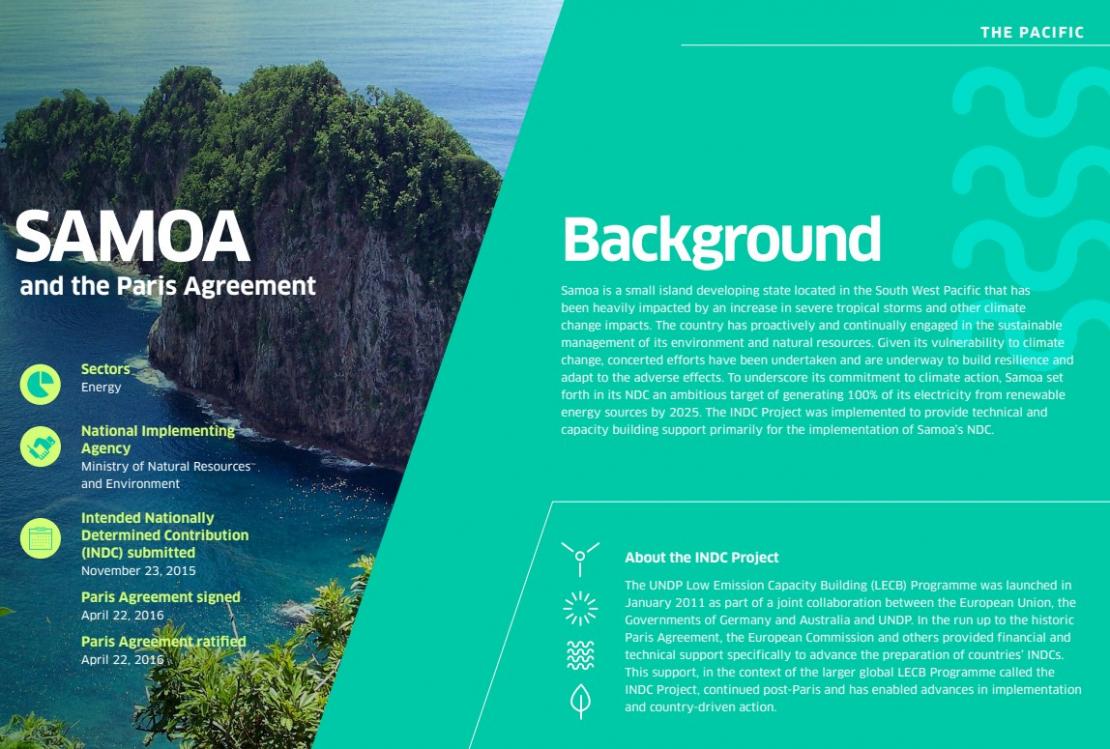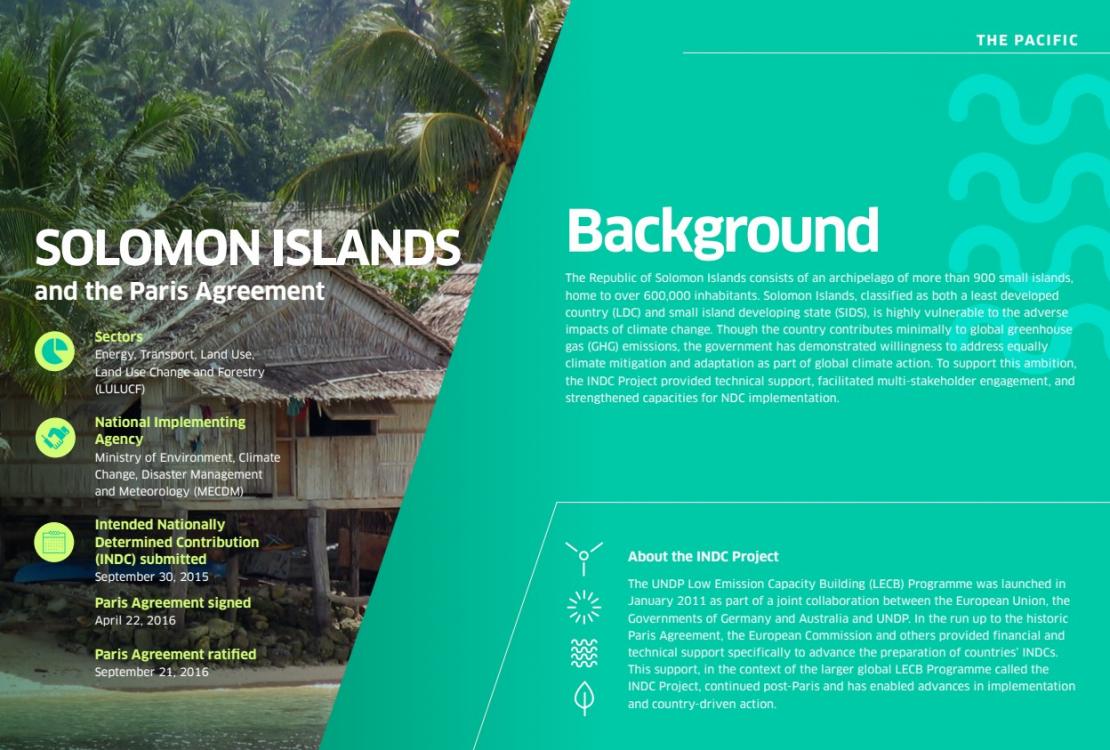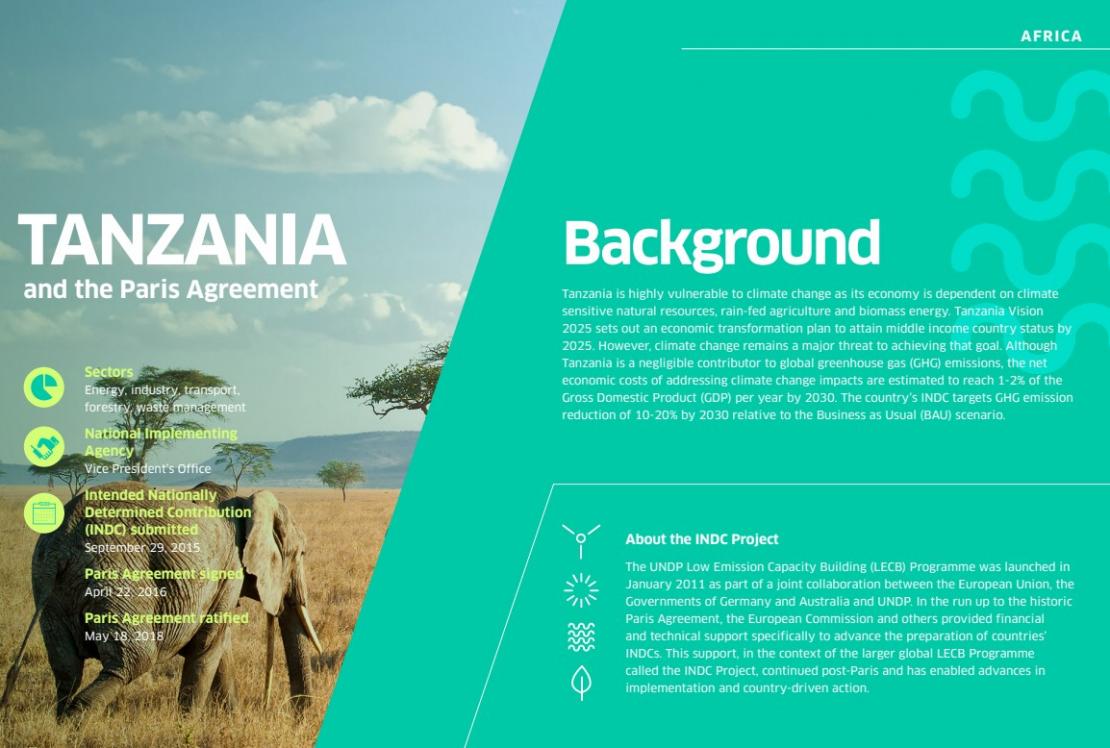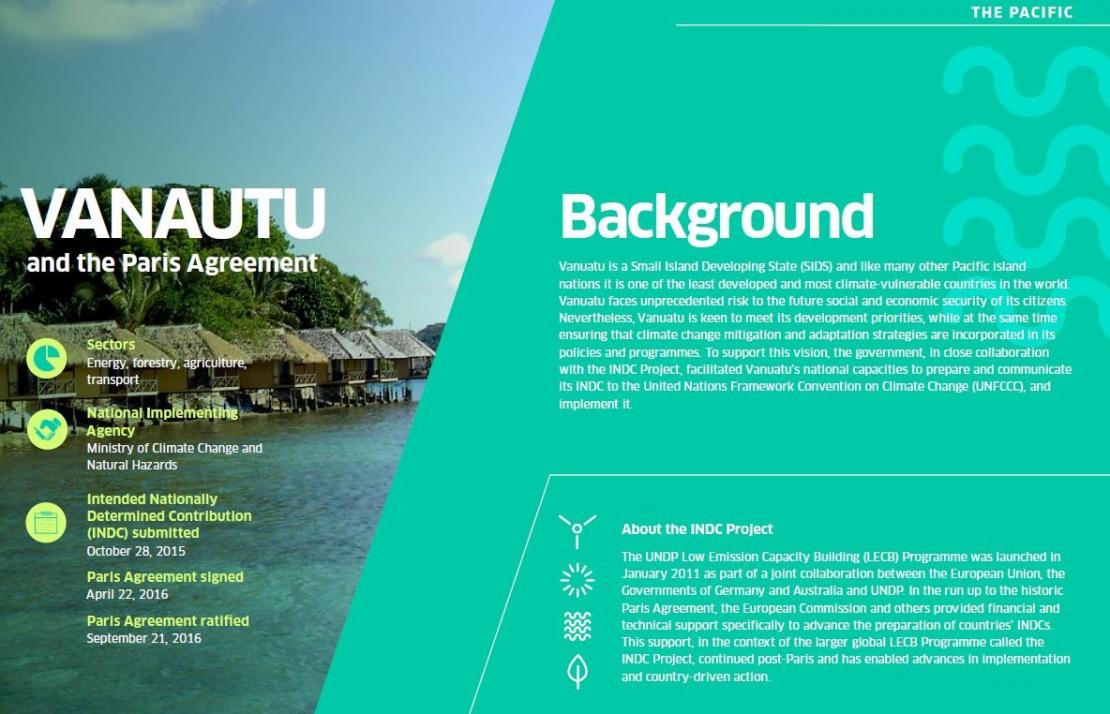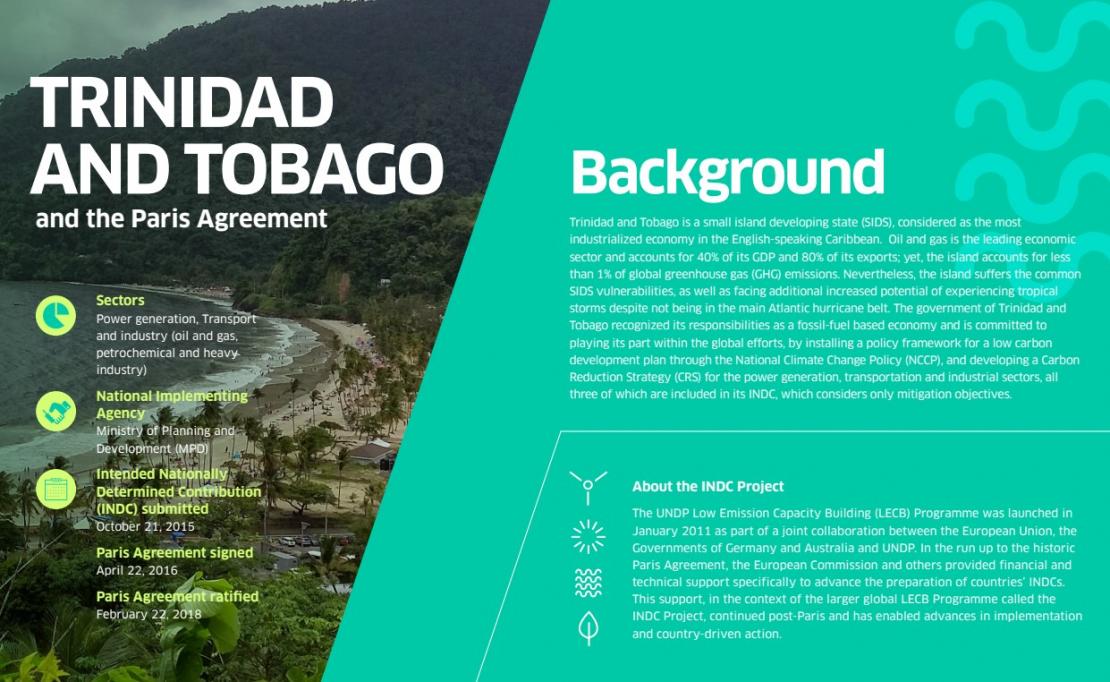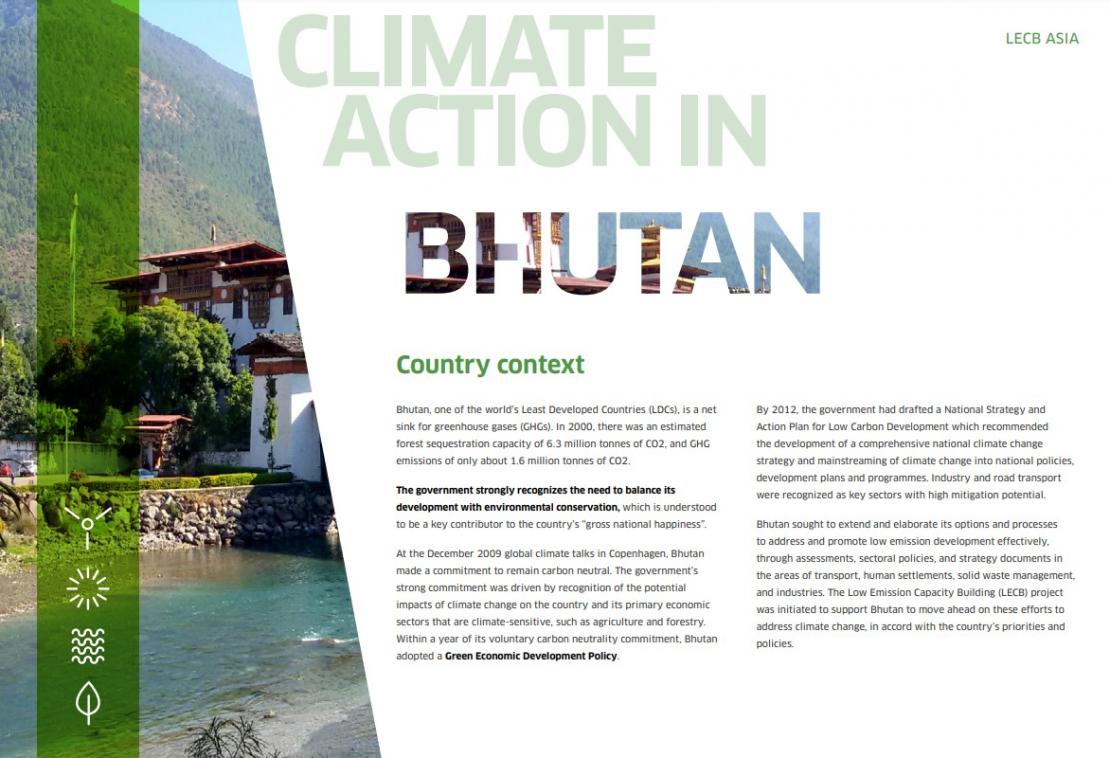Samoa is a small island developing state located in the South West Pacific that has been heavily impacted by an increase in severe tropical storms…
Research and Reports
Sierra Leone has adopted its National Climate Change Policy (NCCP) and National Climate Change Strategy and Action Plan (NCCS&AP) around which…
The Republic of Solomon Islands consists of an archipelago of more than 900 small islands, home to over 600,000 inhabitants.
Suriname has made progress towards climate-resilient and compatible development through a number of green policies and initiatives – in particular,…
The country’s INDC targets GHG emission reduction of 10-20% by 2030 relative to the Business as Usual (BAU) scenario.
The government of Vanuatu, in close collaboration with the INDC Project, facilitated Vanuatu’s national capacities to prepare and communicate its…
Uganda's NDC prioritizes both adaptation and mitigation and is strongly aligned to the country’s development agenda. Uganda’s NDC targets greenhouse…
Trinidad and Tobago is a small island developing state (SIDS), considered as the most industrialized economy in the English-speaking Caribbean.
LECB Argentina’s capacity building efforts included the development of an emissions inventory system, identification of mitigation measures and…
Bhutan sought to extend and elaborate its options and processes to address and promote low emission development effectively, through assessments,…
The Low Emission Capacity Building (LECB) Programme aimed to build capacity in the public and private sectors of developing countries, to pursue a…
The Low Emission Capacity Building (LECB) project began design and scoping in Chile in 2011 and moved to full implementation in 2012.
